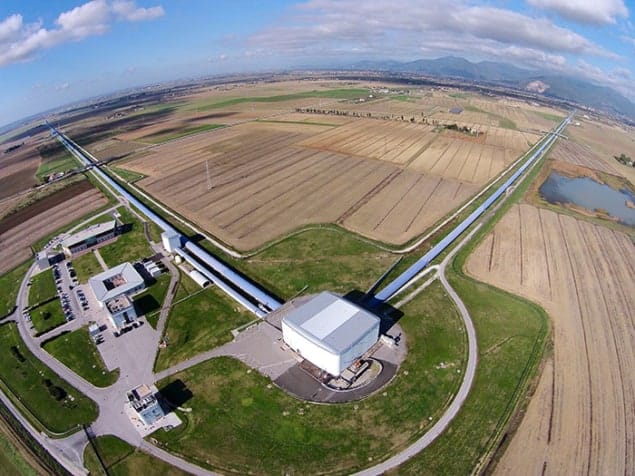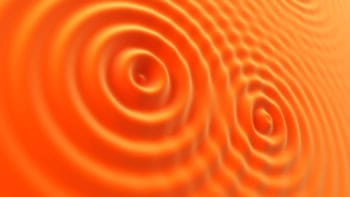
The VIRGO gravitational-wave detector at Cascina, near Pisa, in Italy, has begun taking data for the first time since shutting down in 2011 for upgrades. The detector will now join in the search for gravitational waves with the US-based Advanced Laser Interferometer Gravitational-wave Observatory (aLIGO), which has two detectors located in Hanford, Washington and Livingston, Louisiana.
Upgrades to VIRGO involved dismantling the detector – a giant interferometer – and installing several new components, one of which was glass fibres to suspend the mirrors in place. These 40 kg mirrors, or “test masses”, are located at the end of each 3 km arm and bounce laser beams back and forth. If the light travels exactly the same distance down both arms, then two combining light waves interfere destructively, cancelling each other so that no light is observed at the photodetector. But if a gravitational wave slightly stretches one arm and compresses the other, the two beams would no longer completely subtract each other, producing an interference pattern at the detector.
Merging black holes
aLIGO made the first-ever direct detection of gravitational waves in September 2015, when it spotted waves produced from the collision of two black holes of 36 and 29 solar masses in an event dubbed GW150914. Since then, aLIGO has spotted two more events that occurred in December 2015 and January 2017.
aLIGO began taking data on 30 November 2016 as part of its second observational run, which will end on 25 August. VIRGO was initially expected to join this run in March, but issues with the fragility of the glass fibres meant that engineers had to replace them with metal wires, reducing the sensitivity of the instrument. Although VIRGO’s sensitivity to gravitational waves is lower than the twin aLIGO detectors – but better than its 2011 incarnation – it is still good enough to confirm a detection made by aLIGO. This would then allow physicists to locate the source of the gravitational wave much more accurately than before.
Exciting and challenging
After 25 August, VIRGO will switch off for further improvements that include replacing the metals wires with glass fibres. The detector will then begin commissioning in spring 2018 before joining aLIGO’s third observational run in autumn 2018. “The months ahead of us will be exciting and challenging,” says physicist Alessio Rocchi from INFN Roma Tor Vergata, who is VIRGO’s commissioning co-ordinator. “These upgrades are promising further improvements of the sensitivity, while making the instruments more complex.”
The VIRGO collaboration consists of 280 physicists and engineers at 20 research groups in Europe.



